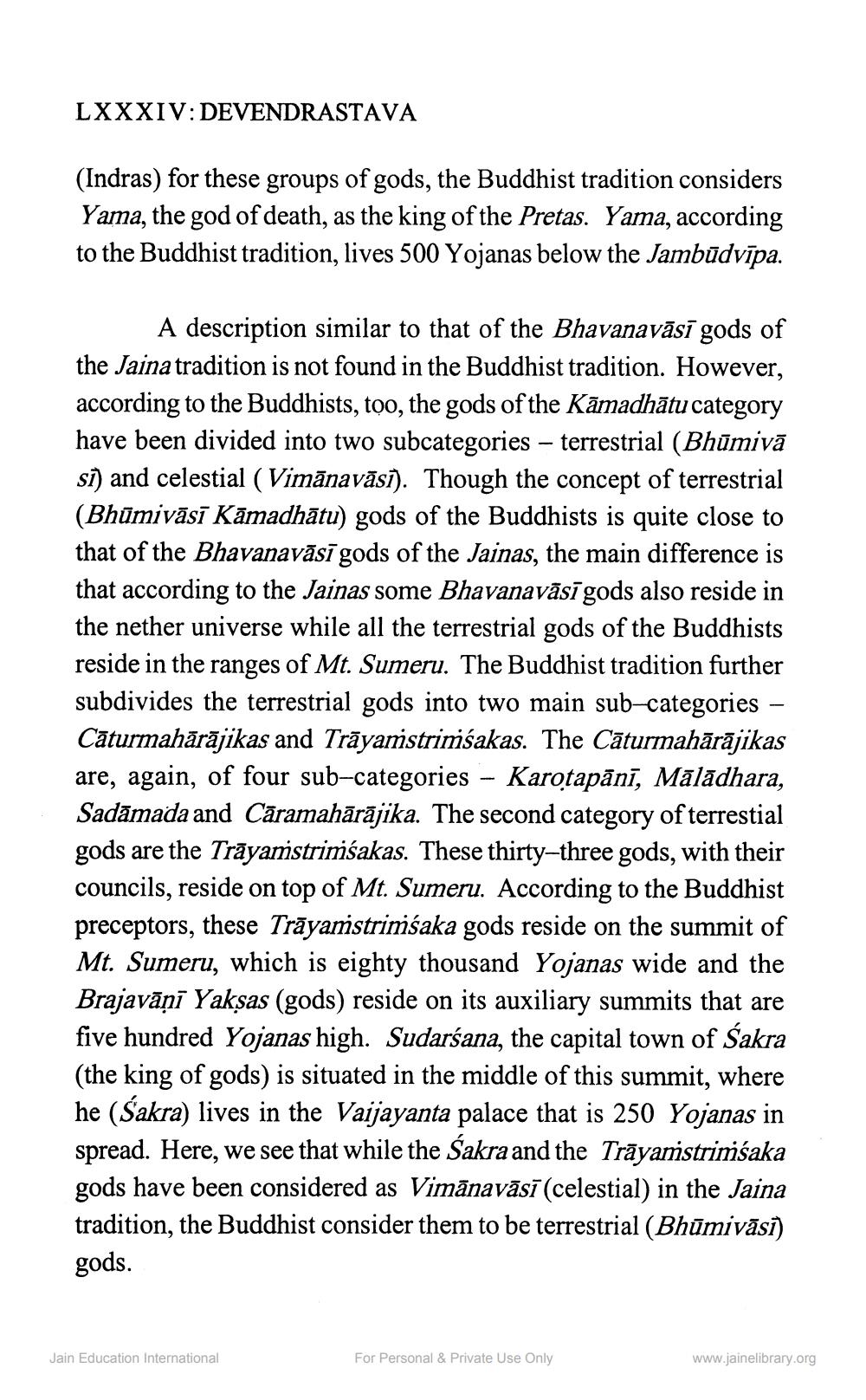________________
LXXXIV: DEVENDRASTAVA
(Indras) for these groups of gods, the Buddhist tradition considers Yama, the god of death, as the king of the Pretas. Yama, according to the Buddhist tradition, lives 500 Yojanas below the Jambūdvīpa.
A description similar to that of the Bhavanavāsī gods of the Jaina tradition is not found in the Buddhist tradition. However, according to the Buddhists, too, the gods of the Kāmadhātu category have been divided into two subcategories – terrestrial (Bhūmivā si) and celestial (Vimānavāsī). Though the concept of terrestrial (Bhūmivāsī Kāmadhātu) gods of the Buddhists is quite close to that of the Bhavanavāsī gods of the Jainas, the main difference is that according to the Jainas some Bhavanavāsī gods also reside in the nether universe while all the terrestrial gods of the Buddhists reside in the ranges of Mt. Sumeru. The Buddhist tradition further subdivides the terrestrial gods into two main sub-categories – Cāturmahārājikas and Trāyamstrimsakas. The Cāturmahārājikas are, again, of four sub-categories - Karotapānī, Mālādhara, Sadāmada and Cāramahārājika. The second category of terrestial gods are the Trāyamstrimśakas. These thirty-three gods, with their councils, reside on top of Mt. Sumeru. According to the Buddhist preceptors, these Trāyamstrimsaka gods reside on the summit of Mt. Sumeru, which is eighty thousand Yojanas wide and the Brajavāni Yaksas (gods) reside on its auxiliary summits that are five hundred Yojanas high. Sudarśana, the capital town of Sakra (the king of gods) is situated in the middle of this summit, where he (Sakra) lives in the Vaijayanta palace that is 250 Yojanas in spread. Here, we see that while the Sakra and the Trāyamstrimsaka gods have been considered as Vimānavāsī (celestial) in the Jaina tradition, the Buddhist consider them to be terrestrial (Bhūmivāsi) gods.
Jain Education International
For Personal & Private Use Only
www.jainelibrary.org




